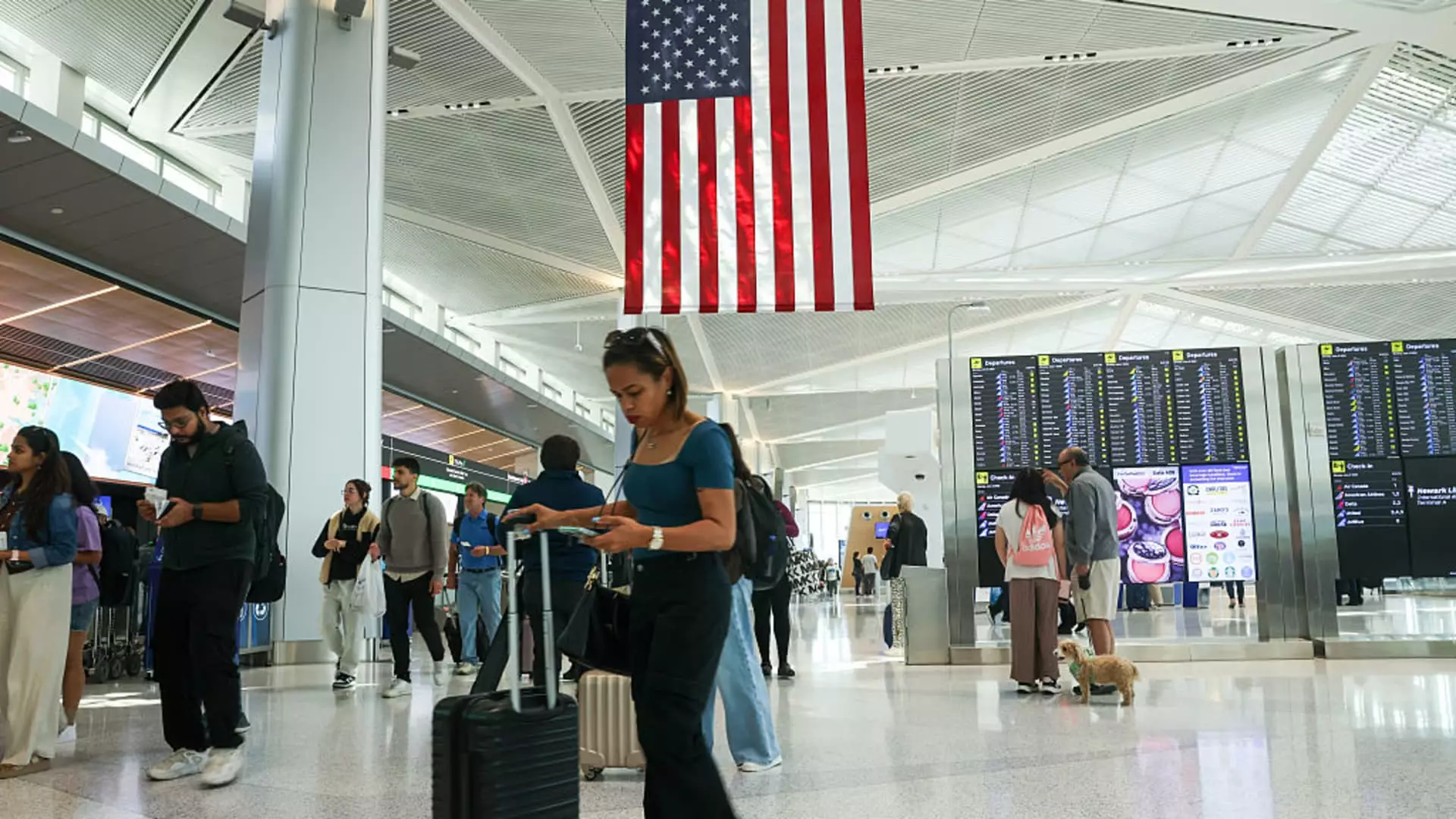As millions of Americans prepare to hit the skies over the July 4 holiday, there’s a deceptive sense of normalcy that masks the grim reality lurking beneath. Airlines enthusiastically tout record-breaking travel numbers, but this apparent surge is a fleeting illusion that obscures deeper systemic issues. The recent summer uptick is fueled by discounted fares and pent-up demand, yet these are not signs of a thriving industry. Instead, they reveal the vulnerabilities of a sector teetering on the edge of an economic precipice, driven by inflated hopes and window-dressing statistics.
While hefty crowds flood airports temporarily, the broader picture remains troubling. The current data points to a fragile recovery at best. Domestic travel costs have decreased to levels not seen since 2021, but beneath this decline lurks the warning sign of reduced profit margins. Airlines dangle low-priced tickets to lure travelers—an unsustainable model in the long run—highlighting that the industry is more dependent on short-term boosts than genuine growth. The promise of an aviation renaissance is a mirage, camouflaged by sheer volume rather than financial health.
Economic Uncertainty: The Hidden Killer
The economic backdrop remains murky, stalling any optimistic forecasts for the airline industry. While airlines like Southwest and others are pulling back their projections for 2025, it’s less a matter of optimism and more of necessity. Trump-era tariffs, inflationary pressures, and a drastic decline in international visitors have collectively constricted the industry’s growth potential. The U.S. economy, despite some robust job numbers, exhibits enough fragility to put a damper on future travel expansion.
The recent decline in air travel spending—an 11.8% drop in June—underscores a worrying trend: consumers are cutting back on discretionary spending, and travel is increasingly seen as a luxury rather than an affordable staple. This is the foundation of a long-term problem. Airlines, traditionally fueled by steady demand, are now fighting to stay afloat amid diminishing bookings and profit margins, unsure whether the current lull is temporary or a sign of more profound shifts.
The Problem of Overcapacity and Unsustainable Strategies
One of the most damning adversaries the aviation industry faces today is itself. Airlines have flooded the market with flights, hoping to capitalize on short-term demand. But this oversupply has created a paradox—more routes and flights, yet less profitability. Major carriers are quietly trimming unprofitable routes and cutting capacity, signaling an internal recognition that their aggressive expansion is unsustainable. In an era where profits are increasingly tied to fewer lucrative quarters, airlines are gambling with their survival on the promise of swift rebounds that may never materialize.
Further complicating the landscape are the international travel dynamics. While overseas trips have shown some resilience, boasting modest fare drops to Europe and Asia, these are mere shadows of pre-pandemic levels. The decrease in fares may bolster short-term volume but erodes margins, leaving airlines caught in a race to maintain market share without jeopardizing their bottom line.
Looking Ahead: A Stark Reality
The industry’s future remains clouded. Airlines are notoriously opaque about long-term prospects, but the signals they send are clear: turbulence ahead. The current scenario is not one of renewal but of recalibration—airlines adjusting to a landscape marked by economic uncertainty, changing geopolitical conditions, and shifting consumer priorities.
It’s time to question the narrative of a full recovery. The inflated ticket sales and airport crushes are symptoms, not solutions. Behind the scenes, airlines are desperately managing capacity, facing declining revenues, and grappling with a declining trust among consumers who increasingly view air travel as a privilege rather than a right. Until these foundational issues are addressed, the industry’s recovery remains more fragile than ever, and what we are witnessing today is nothing more than a temporary respite before the next inevitable downturn.


Leave a Reply